BPC 157 Peptide Reviews
Have you ever wondered about the buzz surrounding BPC-157? This peptide, short for Body Protection Compound, has gained significant attention for its potential healing properties. While it’s not approved by the FDA, a growing number of people are turning to it for recovery, sharing their experiences online. This guide offers a comprehensive look at BPC 157 peptide reviews, exploring what users are saying, what the science indicates, and the potential benefits and risks involved with this intriguing compound. Although some medical professionals acknowledge the promising results seen in preliminary studies and animal trials, overall medical endorsement is limited due to the lack of large-scale human clinical trials. Most claims in BPC 157 reviews are not universally backed by medical professionals, so it’s important to approach these testimonials with caution and consult a healthcare provider before considering use.
Understanding BPC 157 Peptide
So, what exactly is BPC-157? It’s a synthetic peptide, a short chain of 15 amino acids, derived from a protein found in the stomach. Formally known as gastric pentadecapeptide body protection compound (BPC), its primary role in the body is to protect and heal the gut. However, research suggests the effect of BPC may extend to healing musculoskeletal soft tissue. According to recent user feedback and scientific studies, BPC 157 is generally considered to be safe, though most research has been conducted in animals rather than humans; users report mostly positive experiences, but further clinical trials are needed to fully establish its safety profile.
The rising interest in this peptide stems from preclinical studies highlighting its unique mechanism of action. User reviews frequently point to its effectiveness in recovery, but it’s important to understand the science behind these claims. Recent user feedback tends to report that BPC 157 is generally well-tolerated when used responsibly, though some individuals mention mild side effects. Available scientific studies, while promising, are mostly limited to animal research and early-stage trials, so comprehensive safety data for humans is still lacking. Let’s explore its origins and how it is thought to work within the body.
Origins and Discovery
The story of BPC-157 begins in our own bodies. First described in 1992, this peptide is a stable fragment of a protein naturally present in human gastric juice. Its original discovery was linked to its ability to maintain the integrity of the stomach lining, acting as a natural protector for the gastrointestinal tract.
Scientists isolated this 15-amino-acid sequence, creating the stable gastric pentadecapeptide body protection compound BPC that is used in research today. Because it is stable and can be administered in various ways, it became a subject of intense study.
Most of what we know about BPC-157 comes from extensive testing in animal models. These studies have explored its effects on a wide range of tissues, from muscles and tendons to ligaments and bones, laying the groundwork for its reputation as a powerful healing agent. This preclinical evidence is often cited in the positive BPC 157 peptide reviews found online.
Scientific Composition and Mechanism
The proposed mechanism of action for BPC-157 is multifaceted and impressive. At its core, this synthetic peptide appears to be a master regulator of the body’s healing processes. One of its key functions is stimulating the expression of growth factor receptors, making your cells more receptive to healing signals.
Research in preclinical models suggests BPC-157 activates several critical pathways. For instance, it may activate the focal adhesion kinase (FAK)-paxillin pathway, which is vital for cell adhesion, migration, and survival—all necessary steps in repairing damaged tissue. It also appears to upregulate endothelial nitric oxide synthase, an enzyme that helps improve blood flow to injured areas.
Furthermore, BPC-157 has been shown to enhance the expression of Vascular Endothelial Growth Factor (VEGF), a protein that promotes the formation of new blood vessels, a process called angiogenesis. By boosting these fundamental repair mechanisms, BPC-157 may create an optimal environment for tissues to regenerate efficiently.
Exploring the Landscape of BPC 157 Peptide Reviews
Despite the lack of large-scale human trials, the internet is filled with user reviews and anecdotal feedback on BPC-157. This feedback is spread across social media platforms, health forums, and personal blogs, creating a vast landscape of personal experiences. Many of these reviews echo the promising results seen in animal studies, particularly regarding recovery and tissue repair.
While a systematic review of scientific literature highlights promising preclinical data, it also confirms the absence of robust clinical evidence in humans. Therefore, navigating the world of BPC 157 peptide reviews requires a careful approach, distinguishing personal success stories from scientifically validated outcomes. Let’s look at where this feedback comes from and the common themes that emerge.
Sources of User Reviews and Testimonials
If you’re looking for information on BPC-157, you’ll find no shortage of user-generated content online. These testimonials are scattered across numerous platforms where individuals share their personal health journeys and experiments with different compounds.
The most popular sources for these reviews include:
- Health Forums: Websites dedicated to biohacking, fitness, and alternative health are hotspots for detailed logs and discussions.
- Social Media: Platforms like Reddit have dedicated communities (subreddits) with over 100,000 members discussing peptides, where users ask questions and share their results.
- Wellness Blogs: Many bloggers in the health and wellness space write about their experiences, often providing in-depth reviews and guides.
- Video Platforms: YouTube and TikTok have millions of views on videos tagged with “BPC-157,” featuring personal stories and advice.
It’s crucial to remember that this information is largely anecdotal. Unlike a scientific systematic review, these testimonials are not peer-reviewed and can be influenced by many factors, including the placebo effect and sourcing quality.
Common Themes and Patterns in Feedback
When you sift through the numerous BPC 157 peptide reviews, several common themes about its beneficial effects quickly become apparent. The most frequently reported outcome is accelerated healing, particularly for injuries related to musculoskeletal soft tissue. Users often describe recovering from nagging injuries faster than they expected.
Many reviews focus on improved tissue repair. People dealing with tendonitis, muscle strains, and ligament sprains often report a noticeable reduction in pain and an increase in function after using BPC-157. This aligns with preclinical data suggesting the peptide promotes wound healing and helps restore damaged tissues.
Another recurring pattern in feedback is the sense of overall recovery. Beyond specific injuries, some users feel that BPC-157 helps their bodies bounce back more quickly from intense physical activity. These anecdotal reports, while not scientific proof, paint a picture of a compound that many believe provides significant regenerative support.
Reported Benefits in User Experiences
The positive benefits mentioned in user experiences with BPC-157 are often compelling. Many individuals report significant improvements in wound healing and muscle repair, claiming the peptide helped them overcome injuries that were slow to heal on their own. These stories contribute to the growing interest in its potential therapeutic uses.
These anecdotal accounts often highlight faster tissue repair and reduced downtime, which is especially appealing to athletes and active individuals. Some theories suggest BPC-157 may even enhance the expression of the growth hormone receptor, potentially amplifying the body’s natural repair processes. Below, we’ll examine these reported benefits more closely.
Healing and Recovery Acceleration
A key highlight in many BPC 157 peptide reviews is the perceived acceleration of healing and recovery. Users frequently report that nagging injuries to musculoskeletal soft tissue, which can take months to resolve, seem to improve much more quickly. This is particularly noted in the sports medicine community, where rapid recovery is highly valued.
The science offers a potential explanation. BPC-157 is believed to promote angiogenesis, improving blood flow to injured areas and delivering essential nutrients for repair. Although widespread clinical use is not established, the preclinical findings on wound healing are strong. Animal models have shown that BPC-157 can improve functional, structural, and biomechanical outcomes in various injuries.
These preclinical studies provide a glimpse into why users might be experiencing such positive results.
| Injury Model (in Animals) | Reported Preclinical Outcomes with BPC-157 |
|---|---|
| Muscle Transection & Crush | Improved muscle structure, function, and biomechanics. |
| Achilles & Quadriceps Tendon | Improved tendon structure, limb alignment, and motor function. |
| Fracture (Nonunion Model) | Performed similarly to bone marrow grafting in healing bone defects. |
| Ligament Transection (MCL) | Reduced instability and restored biomechanics and structure. |
Improvements for Chronic Pain and Inflammation
Beyond acute injuries, many user reviews focus on BPC-157’s potential to alleviate chronic pain and inflammation. Individuals suffering from persistent joint pain, such as in the knees, often turn to this peptide in search of relief when other treatments have failed.
The compiled scientific information contains a single retrospective human study that offers a sliver of clinical insight. In this study, 12 patients with unspecified chronic knee pain received an intra-articular injection of BPC-157. Notably, 7 of those 12 patients reported subjective symptom relief for more than six months. While this is a very small sample size, it aligns with the anecdotal reports from users.
The anti-inflammatory effects seen in animal models could explain these outcomes. BPC-157 has been observed to decrease inflammatory markers like IL-6 and TNF-alpha. By reducing inflammation and promoting tissue repair, the peptide may address some of the root causes of chronic pain, rather than just masking the symptoms.
Safety Profile According to Reviews and Research
When considering any new compound, safety is a primary concern. According to a systematic review, preclinical research in animal models has shown a surprisingly clean safety profile for BPC-157, with no acute toxicity or significant adverse effects reported across a wide range of doses.
However, this is where the scientific certainty ends. There is a significant lack of clinical studies on humans, meaning the long-term safety profile is unknown. User reviews online present a mixed picture, with some individuals reporting side effects. This discrepancy between clean animal data and anecdotal human reports makes it essential to look closer at the safety data available.
Frequently Mentioned Side Effects
While animal studies haven’t shown significant adverse effects, the landscape of user-generated BPC 157 peptide reviews tells a slightly different story. It is important to note that since BPC-157 is sold in an unregulated market, these side effects could be due to the product itself, contamination, or incorrect drug administration.
The scientific literature acknowledges that anonymous online users report various side effects. Some of the most frequently mentioned include:
- Anxiety and panic attacks
- Heart palpitations
- Fatigue, drowsiness, and weakness
- Insomnia
- Loss of appetite and mood changes like depression
Because there are no formal clinical studies documenting these side effects in humans, all available safety data comes from either preclinical animal models or these informal user reports. Researchers speculate that some of these effects could be linked to BPC-157’s ability to modulate inflammatory, dopamine, and serotonin pathways.
User Satisfaction on Long-Term Safety
When it comes to the long-term safety of BPC-157, the honest answer is that we just don’t know. The current body of scientific evidence is built almost entirely on preclinical animal studies, and even those have limitations. The longest safety assessments in these studies followed the animal models for only six weeks.
A systematic review found no registered clinical trial that has published results on the safety of BPC-157 in humans. This is a critical gap in the research. Without controlled human trials, it’s impossible to determine the true long-term safety profile or to understand potential risks that may only appear after extended use.
User satisfaction with long-term safety is therefore based on individual, unverified experiences. While many users report no issues, the lack of official data means anyone considering BPC-157 is venturing into uncharted territory. This uncertainty is a significant factor to weigh against the potential benefits.
BPC 157 Peptide Reviews for Sports Injuries
Athletes are one of the most interested groups when it comes to BPC-157, and for good reason. The world of sports medicine is constantly seeking an edge in recovery, and the preclinical data on BPC-157’s effect on musculoskeletal soft tissue is compelling. Injuries to structures like the Achilles tendon can be career-altering, so the promise of accelerated wound healing is highly attractive.
However, this interest comes with a major caveat: BPC-157 is banned by the World Anti-Doping Agency (WADA) and many major professional sports leagues. Let’s explore what athlete experiences look like and how the peptide is thought to impact recovery timelines.
Athlete Experiences and Results
The use of BPC-157 among athletes is a growing trend, driven by the pursuit of enhanced recovery. Anecdotally, many athletes who use the peptide report positive results, claiming it helps them bounce back from strenuous training and heal from injuries that would typically require a long layoff. The goal for any athlete is a swift return-to-activity, and BPC-157 is often seen as a potential tool to achieve that.
However, athletes must be extremely cautious. Its use is prohibited in most competitive sports. Organizations like the UFC and the NFL have specifically banned BPC-157. This is because peptides are considered performance-enhancing drugs, and BPC-157 falls under this category due to its regenerative properties.
The “results” athletes experience are not documented in any formal pilot study or clinical trial. They are based on personal use, often outside the bounds of their sport’s regulations. The experiences shared in online forums are compelling, but they exist in a gray area of sports medicine.
Return-to-Activity Timelines
One of the most exciting aspects of BPC-157 research is its effect on the very building blocks of our connective tissues. Studies have shown that BPC-157 can stimulate the growth and migration of tendon fibroblasts—the primary cells responsible for creating and maintaining tendons. This cellular-level activity is a powerful indicator of its potential for accelerated wound healing.
By promoting the health and function of tendon fibroblasts, BPC-157 could theoretically shorten the time it takes for musculoskeletal soft tissue to repair itself. Additionally, research indicates that the peptide enhances the expression of growth factor receptors, making the healing environment even more robust. This suggests that the body’s own repair mechanisms could work more efficiently.
While these findings are from preclinical models, they offer a scientific basis for the anecdotal claims of faster return-to-activity timelines seen in user reviews. The idea is that by optimizing the biological processes of repair, BPC-157 could help people get back on their feet sooner after an injury.
Comparing BPC 157 Peptide Feedback Across Online Communities
The digital age has created a global forum for discussing compounds like BPC-157. User feedback is abundant, with Google search volume for the peptide at an all-time high and millions of video views on platforms like TikTok and YouTube. This online chatter spans everything from detailed personal logs on health forums to quick testimonials on social media.
This explosion of interest means that different online communities, such as Reddit and various wellness blogs, have developed their own perspectives on the peptide’s effectiveness and credibility. Understanding the nuances of the conversation in each of these spaces can provide a more complete picture of public perception.
Insights from Reddit and Health Forums
Reddit and specialized health forums are ground zero for detailed user feedback on BPC-157. On these platforms, discussions are often more in-depth than on mainstream social media. Users create lengthy posts detailing their dosage, administration methods, injury history, and day-by-day progress.
The general sentiment on these forums is cautiously optimistic. Many users rate the effectiveness of BPC-157 highly, sharing impressive stories of recovery from chronic injuries. However, these communities are also realistic about the risks. Discussions about side effects, the importance of sourcing from a reputable supplier, and the lack of human clinical data are common.
Credibility is a major topic of debate. Users often try to vet sources and share their experiences with different brands, creating a crowd-sourced system of trust. While this feedback is valuable, it is not a substitute for scientific verification and should be approached with a healthy dose of skepticism.
Perspectives from Wellness Blogs
Wellness blogs often present BPC-157 in a very positive light, positioning it as a powerful tool for health optimization and tissue repair. These articles are typically written as a personal review or an informational guide, breaking down the science in an easy-to-understand format for a general audience.
Many blogs review BPC-157 alongside other compounds as part of a “biohacking” toolkit. They frequently highlight the preclinical research on its healing properties and pair it with glowing personal testimonials. These platforms play a significant role in popularizing the peptide and framing it as a beneficial dietary supplement, even though its legal status is complex.
However, readers should be aware of potential biases. Some wellness blogs may have affiliate relationships with peptide suppliers, which could influence their reviews. It is always wise to cross-reference information from blogs with discussions on more neutral platforms like health forums and to remember the distinction between anecdotal success and clinical proof.
Legitimacy and Quality Concerns in User Reviews
A major red flag raised in many BPC 157 peptide reviews is the issue of legitimacy and quality. Because BPC-157 is not approved by regulatory agencies like the FDA, it exists in a legal gray area. It is often sold as a “research chemical” or a “dietary supplement,” classifications that are not subject to the same rigorous standards as pharmaceutical drugs.
This lack of regulation creates significant risks for consumers. There are widespread concerns about the authenticity of products, potential contamination with a prohibited substance, and incorrect dosing. These issues are a recurring theme in online discussions, as users struggle to find trustworthy sources in an unregulated market.
Authenticity of BPC 157 Supplements
Ensuring the authenticity of BPC-157 supplements is one of the biggest challenges for users. The market is flooded with products, and without oversight from regulatory agencies, it’s difficult to know if you’re getting a pure and effective product. This concern is echoed frequently in user reviews.
The legal status of BPC-157 adds to the confusion. The FDA has placed it in “Category 2,” a list of bulk drug substances that raise significant safety concerns and cannot be used in compounding by pharmacies. Despite this, it remains available online. The risks of purchasing unregulated products are significant:
- Contamination: Products could be contaminated with harmful substances.
- Incorrect Concentration: The peptide you receive might be weaker or stronger than advertised.
- Impurities: The manufacturing process may leave behind unwanted byproducts.
- Mislabeled Products: You could be receiving a completely different substance.
Users often rely on third-party lab testing shared by suppliers to verify authenticity, but even this can be difficult to confirm.
Issues with Sourcing and Brand Trust
The challenge of sourcing BPC-157 safely is a constant topic of conversation on social media and health forums. With no FDA-approved version available, consumers are left to navigate a landscape of online vendors, many of whom operate with little transparency. Building brand trust in such an environment is incredibly difficult.
Users often share lists of “vetted” suppliers, but this system relies entirely on anecdotal evidence. One person’s positive experience does not guarantee a brand’s overall quality or consistency. Furthermore, conflicts of interest are a real concern. Positive reviews, especially on blogs or from influencers, may be sponsored or driven by affiliate commissions, making it hard to find unbiased opinions.
This lack of a clear, trustworthy sourcing path is perhaps the single greatest risk associated with using BPC-157. The potential benefits must be weighed against the very real possibility of receiving a product that is ineffective, impure, or even harmful.

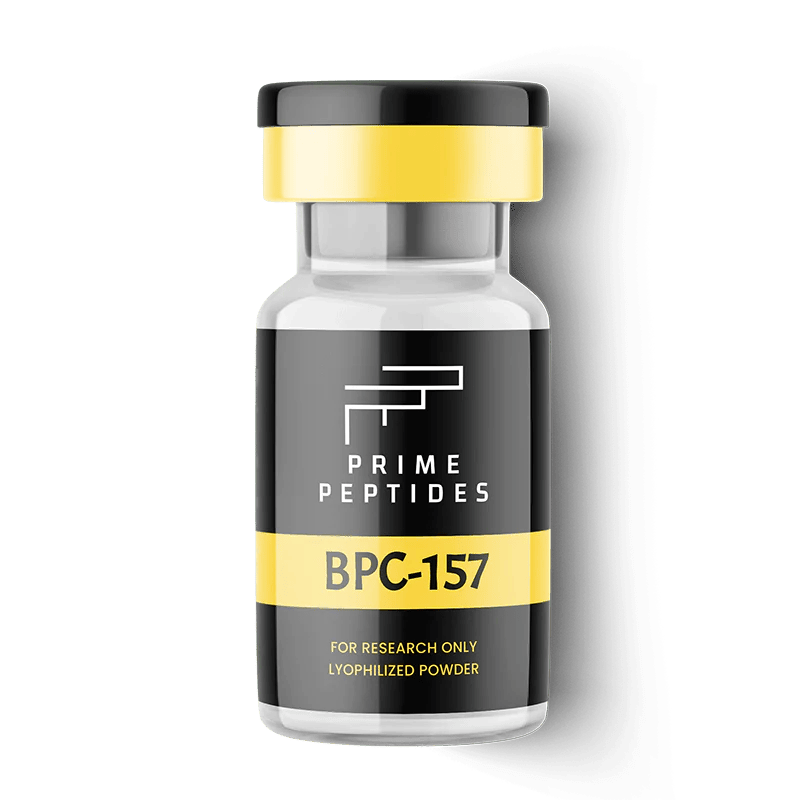
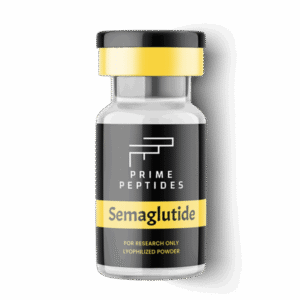
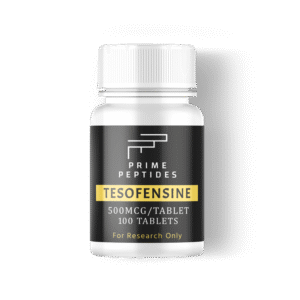
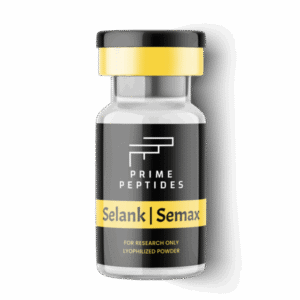
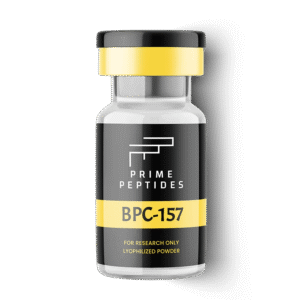
Reviews
There are no reviews yet.